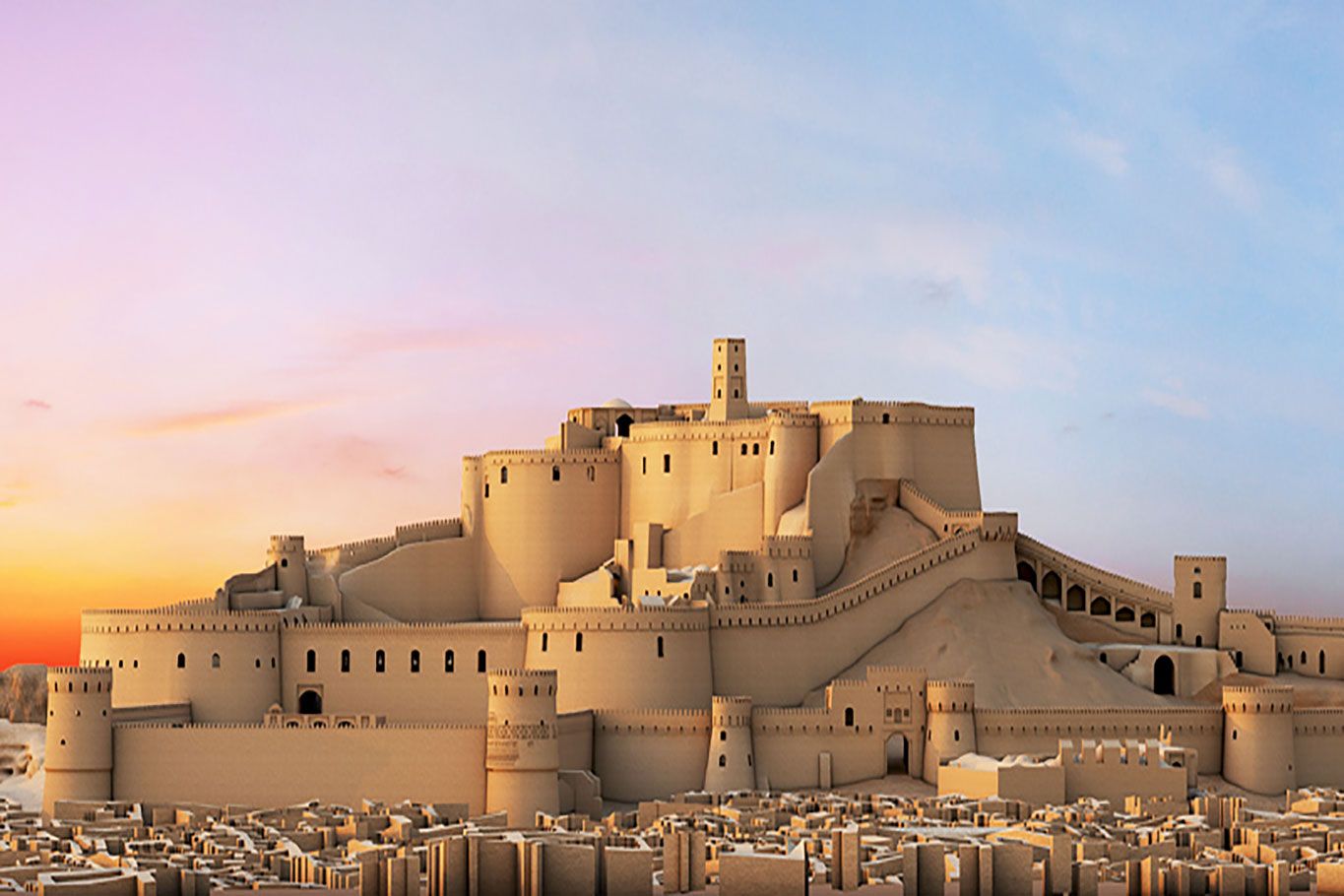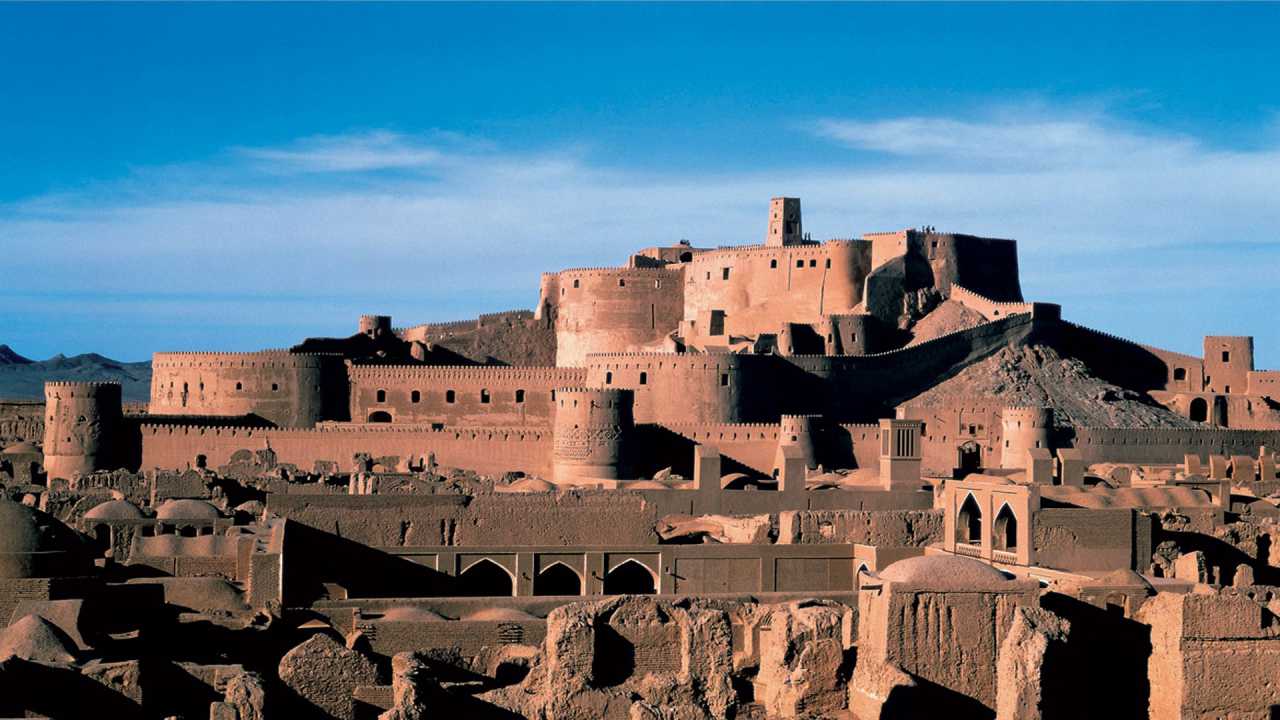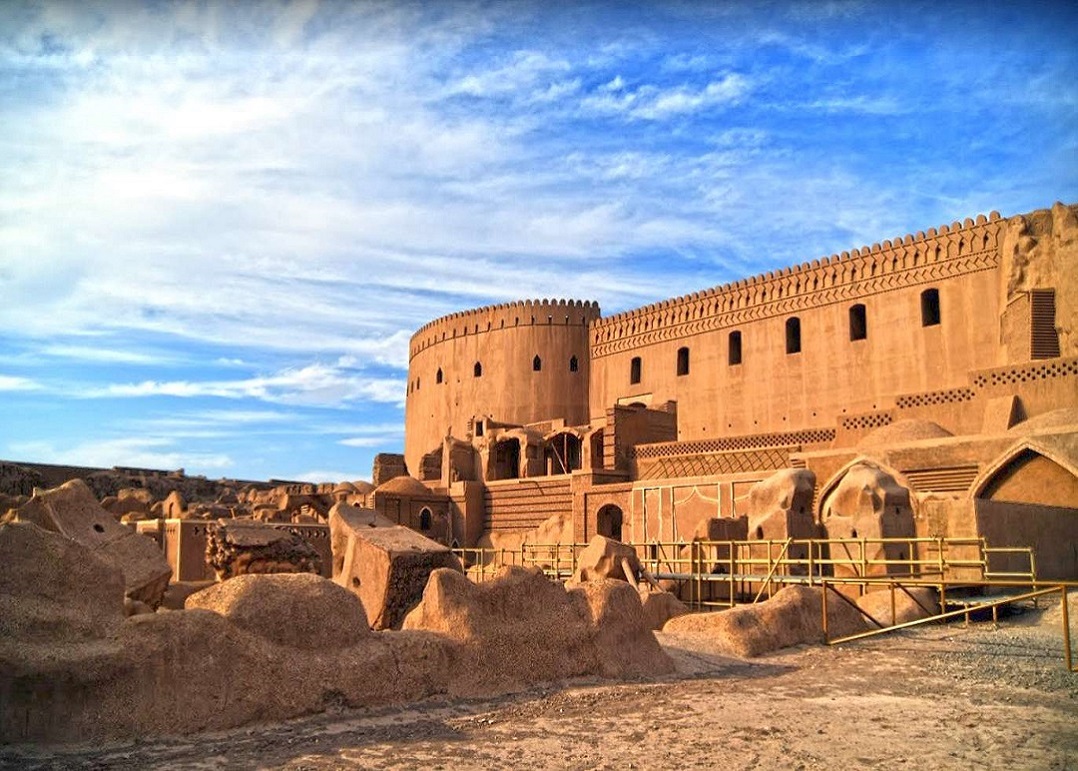The Citadel of Bam, locally known as Arg-e Bam, is considered as one of the largest uniform mudbrick structures in the world. Arg-e Bam has been registered as a UNESCO World Heritage Site. This fortified city is one of the marvels of Iranian architecture. Let’s see why and how the citadel has won this recognition.
Bam
If rivers passing through plain lands contributed to the development of civilizations and cities, trade roads helped their extension and growth. One such city is the ancient city of Bam in Kerman Province, Iran. The city is located in the south-east of Iran, not a long distance away from Pakistan.
The ancient Silk Road which extended to the Persian Gulf in the south, Central Asia in the east, and Egypt in the west, passed by Bam. This means, the city also had easy access to the famous Spice Route. In turn, Bam itself was a famous center for the production of silk and cotton cloths. So, it was able to take part in the trade and benefit from it.
As a city located on the edge of the central deserts of Iran, this oasis serves as an example of the genius used in the interaction of man and nature. The most important instance is the water provided for the city. Since ancient times, qanats have been used to transfer water from highlands to lowlands. In Bam, these qanats and underground irrigation channels were used to draw the required water for life.
History of Arg-e Bam
The area which is today known as Arg-e Bam is, in fact, an enclosed fortified town which has been completely made of mudbricks. The citadel spans over an area of 44 acres. Since its early days, the citadel has gone through different phases of creation under the rule of several kings and governors. Each layer of construction has revealed new information as to the date of the citadel’s establishment and architecture styles.
Unfortunately, there are no clear dates of the city’s origination. Based on the location of the citadel’s establishment as half on a hill and half a platform made by humans, it is assumed that the town might date back to the Achaemenid period (6th – 4th centuries BC). This technique was mainly used by the Achaemenids.
During the consecutive years in Parthian and Sassanid periods, essential parts of the city, as well as the governmental buildings, were added. Also, the structure of the fort was extended during these periods. With the Arab’s conquest of Iran and the wars that followed, the citadel was damaged to some extent.
From the early 16th to 18th centuries, with the country’s peaceful circumstances, the citadel prospered. Bam had already flourished with its bazaars and market places. The four seasons mansion of the citadel was built then.
But with the Qajar period, the city gradually lost its hustle and bustle. At several periods in the past, the citadel had been used as a base camp. During the Qajar period, it was mainly used to withstand the attacks from Afghanistan and Baluchistan. As a result of military upheavals in the area, military uses of the citadel, and the construction of a new city people gradually left the citadel.
In 2003, a large part of the citadel was seriously damaged because of an earthquake. As a result, a lot of information was revealed about the materials used in the citadel’s construction. The layers of construction became clearly exposed as well. Despite the ruins, a great part of the citadel, especially its mansion, has been reconstructed and restored.

Design and Architecture of Bam Citadel
The citadel’s architecture used to follow a hierarchical order. This means that the common people and the governors resided in separate neighborhoods. In addition, the city was generally speaking divided into 4 sections: the barracks, stables, the residential zone, and the governors’ zone. The surrounding walls rise up to 7 meters and stretch for about 1,815 meters. Several towers for watching and protection were installed on the barracks, the outer walls and across the city.
As mentioned, there were two residential zones: one for the common people, and the other one for the governors. The ordinary people’s houses were built further south near the entrance. The houses became bigger and more prominent as they approached the Four Seasons Mansion in the north. This indicates that wealthier families lived to the north, closer to the mansion. The two sections of the town were separated by a wall which let people pass through a gate. All around the city was surrounded by walls at the bottom of which moats were dug as a protective measure.
The structures built in the citadel are valuable examples of structures built in a city in the desert. The neighborhood of the common people included the following parts: the main gate, residential area, mosques, bazaar, Zoorkhane (a traditional Iranian gym), Sabat (covered passageway), Tekyeh, public bathhouse, school, and stables. The neighborhood resided by the governors of the city was located higher, on the rocky part of the town. It included these parts: the main tower, four seasons mansion, water well, bathhouse, soldiers house, residential areas, gate, and fort.
The earthquake of 2003 revealed many hidden sections of the city. The materials used for the construction of all the structures are adobe, kinds of non-baked clay bricks.

Bam Citadel After the Earthquake
After the earthquake of 2003, about 80% of the entire city was reduced to rumbles. However, a large part of the city has been restored recently.
Arg-e Jadid
Arg-e Jadid of Bam is a tourist complex, which was built near the old citadel of Bam. This is a village where tourists can enjoy their time. There are artificial lakes and waterfalls here. Visitors can ride boats in this lake. Guests can also try horse-back riding, bicycle and motor riding in special areas. In addition to this, several Iranian gardens have been built in this area, making it one of the most beautiful places in Bam.
Address of Arg-e Bam
Arg-e Bam is located in Kerman Province of Iran. This means you will have to go to Kerman Province, then head out to the city of Bam. The Arg-e Bam is located 6 kilometers outside the current city of Bam.
Opening Hours
It’s possible to visit Arg-e Bam from 7:00 AM to 5:30 PM. Please keep in mind that the working hours might differ on religious and national holidays.
Entrance fee
The entrance fee for foreign nationals is 15,000 tomans.
Bam tourist attractions
In addition to Arg-e Bam, there are some other beautiful tourist attractions in Bam you may want to check out. Expect to explore nature as well as the lifestyle of the people living in the desert. Take a look at these places:
- Qasem Abad and Akbar Abad Qanats are two famous qanats in Iran. They stretch for about 1100 meters and have 35 wells.
- Palm Grove of Bam is an iconic place as Bam in general is famous for its dates. In this green area, you will see tall palm trees, with sweet dates.
FAQ
Arg-e Bam is open from 7:00 o’clock in the morning to 5:30 in the afternoon.
The hotels of Bam are the closest to Arg-e Bam. These hotels include:
Parsian Bam Hotel
Bam Kourosh hotel
New Arg Hotel
You will need to go to the city of Bam, in order to find a restaurant or place to eat. Check out these places.
Dasht Behesht Restaurant
Dorehami Café
Siah o Sefid Pizza
Some of the tourist attractions near Bam include:
Qasem Abad and Akbar Abad Qanats
Palm Grove of Bam
Arg-e Jadid (new citadel)



Comment (0)